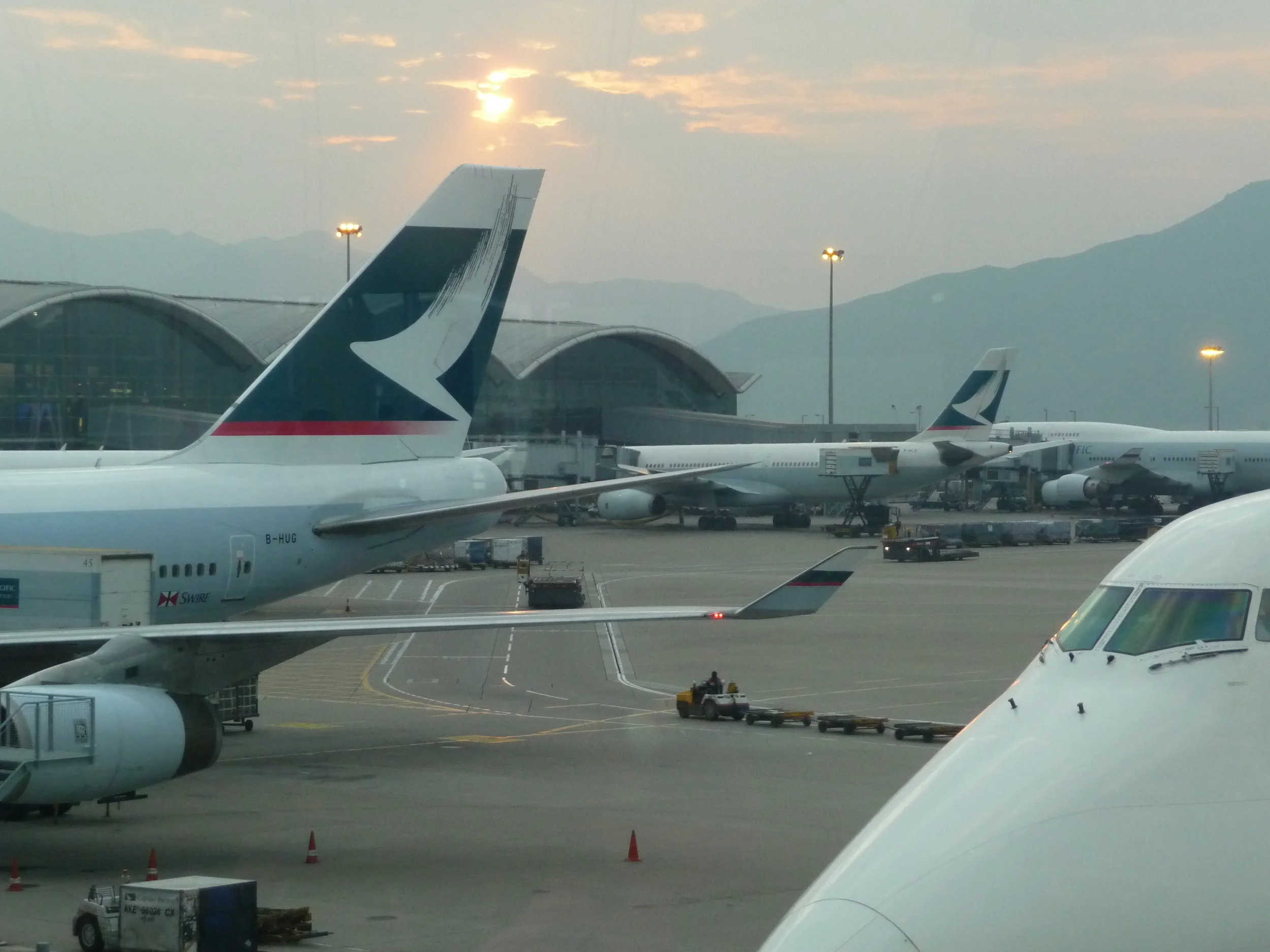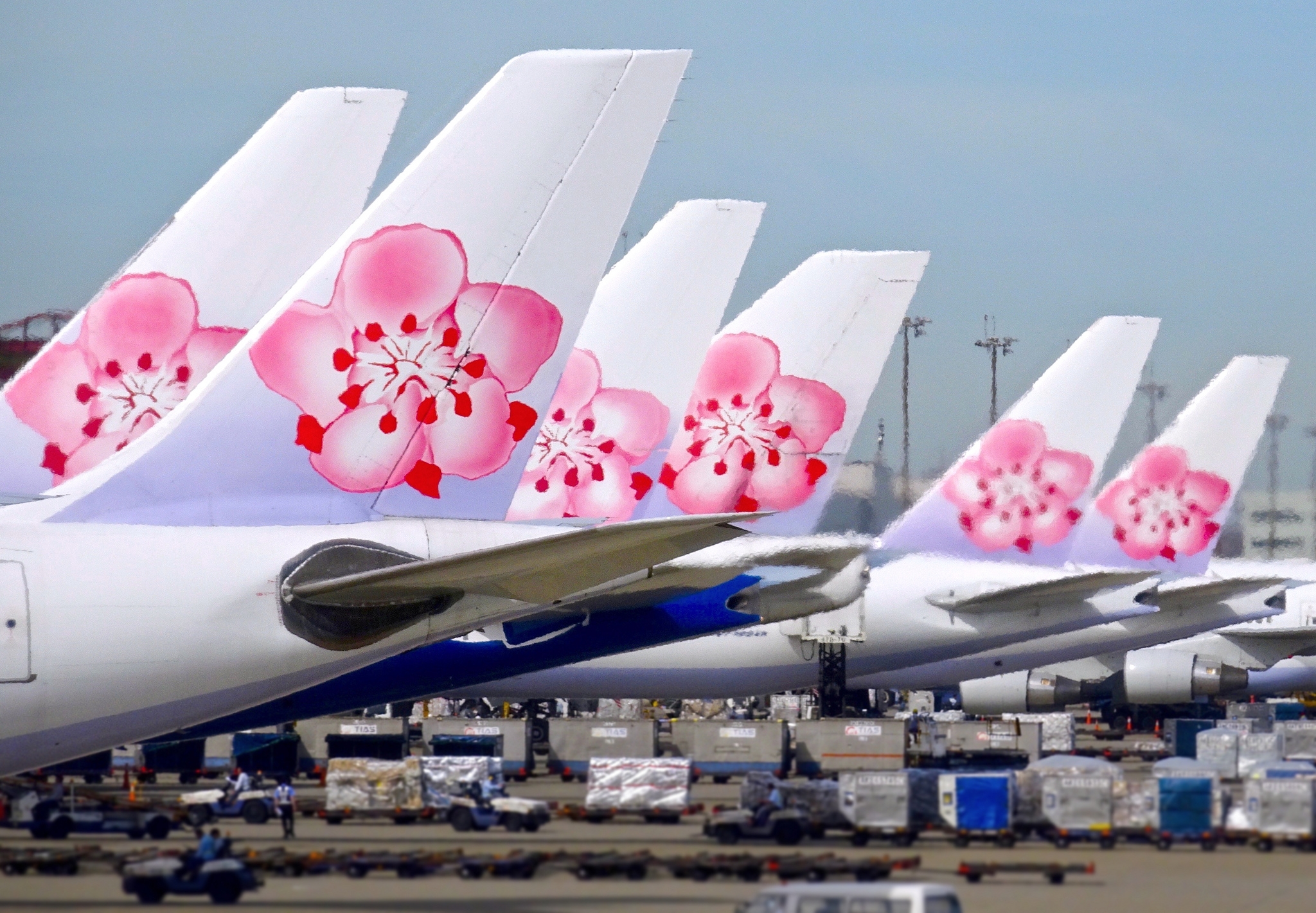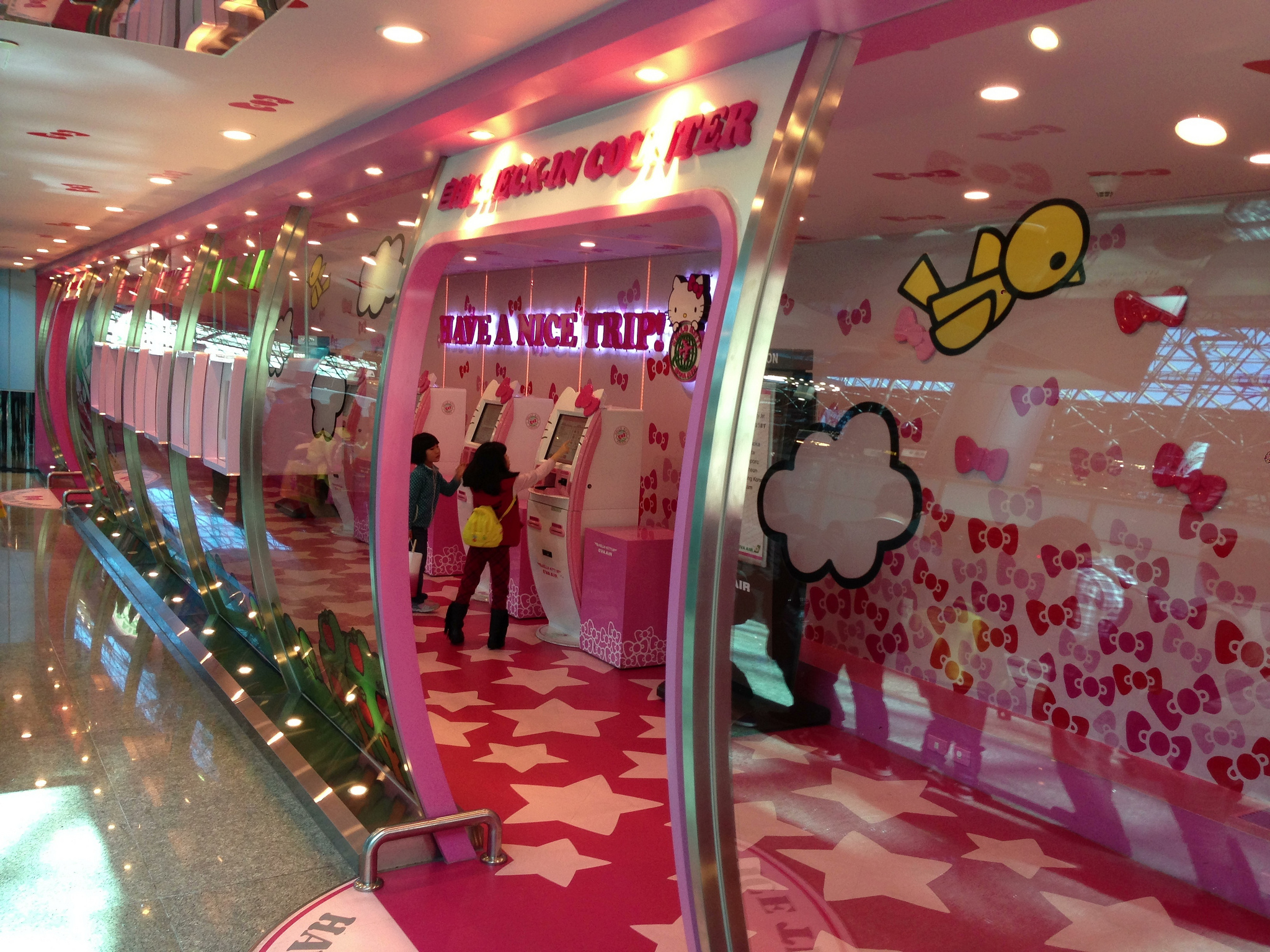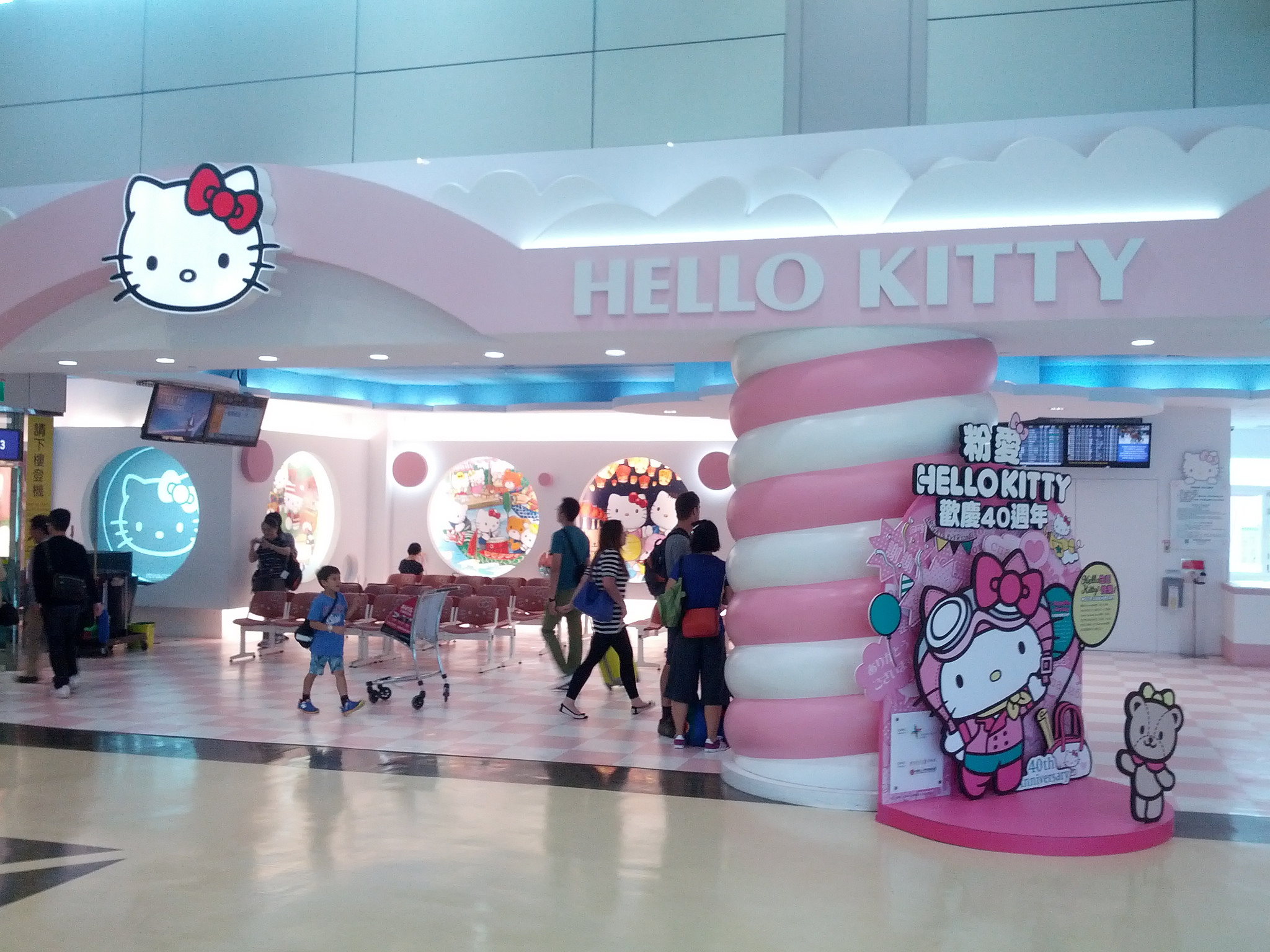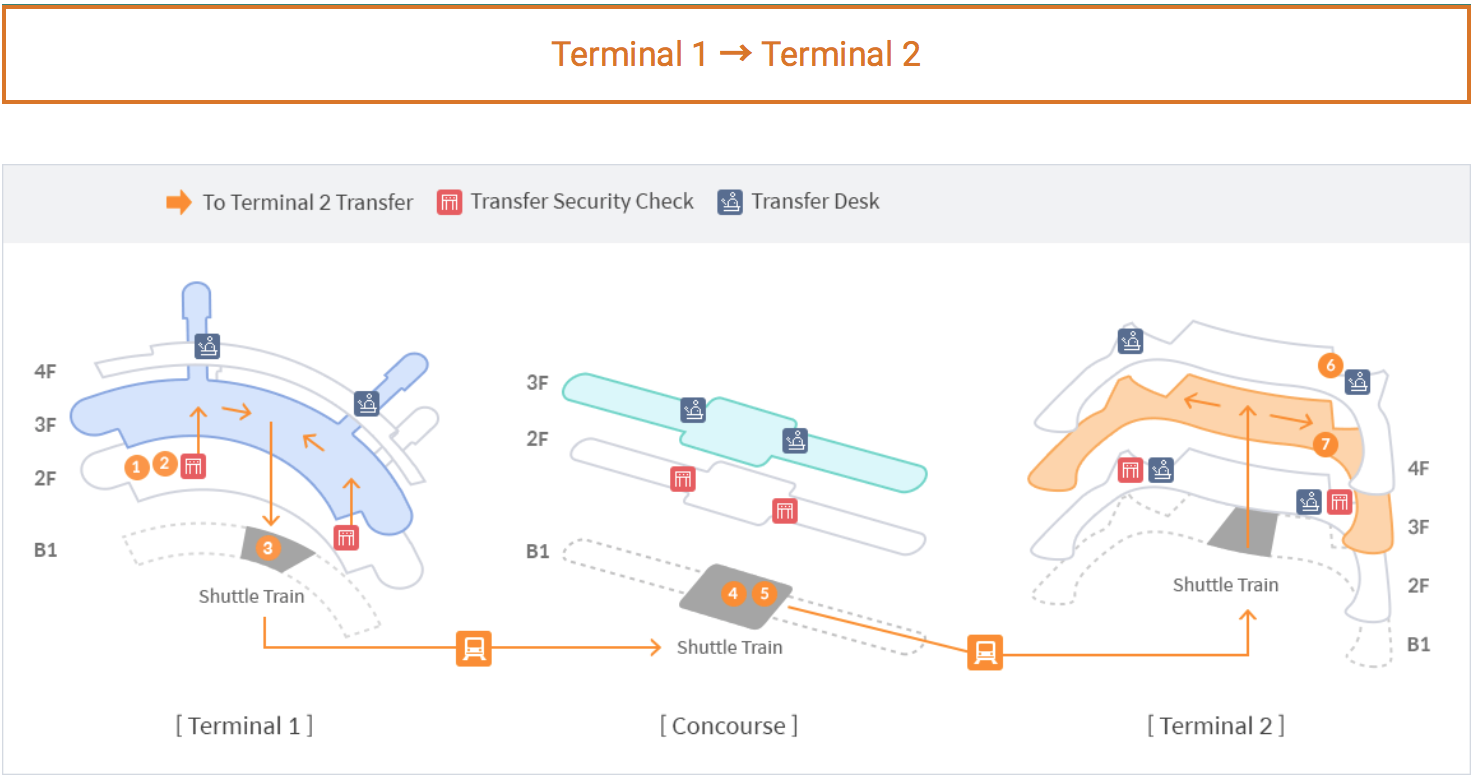Taipei Taoyuan - TPE
/A growing airport for a natural East Asian hub
Taiwan's location on the main sea routes hugging the Pacific coast of Asia, abundant natural resources and farmland, and pleasant climate made it an obvious choice for European and Asian colonization. After World War II and the Chinese Revolution, the island's population of refugees, indigenous tribes, and mosaic of dozens of other cultures had to rebuild without help from the Mainland - so trade became their lifeline, linking Korea and Japan with Hong Kong, the Philippines, and Southeast Asia.
Taipei's original main airport, Songshan, by the mid-1970s had become overcrowded and hemmed-in by the burgeoning city. Between the buildings and highways surrounding it, and the ring of mountains surrounding its downtown location, there was no way that longer runways could be built to handle long-range jumbo jets - no way to construct a terminal that could handle ever-increasing passenger counts - and no place to put the massive cargo warehouses needed to keep up with Taiwan's growing manufacturing trade, especially in high-value electronics where shipping by air instead of sea delivered higher value.
The new airport was opened in 1979 well outside Taipei's suburbs. Originally called Chiang Kai-Shek (CKS) after the Nationalist leader, it was renamed Taipei Taoyuan in 2006 after its local community. (Songshan Airport is also still in busy operation, serving domestic flights as well as key regional airports - but it still can't handle long-range flights.)
Government-run China Airlines quickly put the airport's long runways to good use by starting nonstops to the United States and multi-stop flights to Europe. Traffic continued to grow through the 1980s and 1990s, leading to the construction of a second terminal, as well as opening up airline competition to new carriers. Preparation is underway for an impressive third terminal and hotel complex that will open in 2020.
Today, two home-team airlines carry most of the long-haul traffic from North America to Taiwan. First is China Airlines [airline code CI], a member of the Skyteam alliance (with Delta, Korean Air, China Eastern, and KLM helping on code-shares). China Airlines has a subsidiary, Mandarin Airlines, that flies to smaller points in Taiwan as well as on the Chinese mainland. China Airlines flies to California, Vancouver, New York, and Hawaii with its modern widebody fleet. CI opens the first Transpacific nonstop service to Ontario, California in March 2018.
Image by KC Shih via Flickr, CC 2.0 license
The other long-range carrier based in Taipei is EVA Air [airline code BR] and its short-haul subsidiary Uni Air. EVA Air is in the Star Alliance with United, Air Canada, Asiana, Air China, and ANA-All Nippon. EVA has been steadily adding service to Star Alliance hubs in North America, recently opening Chicago and Houston. United adds a frequency to San Francisco, and Air Canada one to Vancouver each day, as well.
Image by Steven Byles via Wikimedia Commons, CC 2.0 license
Click to expand view
Service Overview
Regional service from Taipei to East and Southeast Asia is robust and competitive: not only do EVA Air and China Airlines fly to all the major cities in Japan, South Korea, Hong Kong, and Southeast Asia, additional local competition on runs to places like Seoul, Tokyo, and Osaka comes from Hong Kong's Cathay Pacific, who has traffic rights thanks to postwar treaties. The run between Taipei and Hong Kong is one of the world's busiest corridors, with dozens of daily flights and nearly all of them using widebody equipment.
East Asia's major carriers all call on Taipei; for Transpacific flying, Cathay Pacific is a reasonable option via Hong Kong; ANA-All Nippon and Japan Airlines have frequent connections via Tokyo; and Asiana and Korean Air also offer multiple departures through their Seoul hub. Sometimes good bargains can even be found with Chinese carriers connecting through Shanghai (China Eastern) or Beijing (Air China and Hainan Airlines), depending on destination.
Low-cost carriers from all across Asia have found success at Taipei, too, and most of the region's budget airlines have started service there. Tigerair has a hub at Taipei, and companies like Air Asia, Jetstar, Peach, Jeju Air, Scoot, and VietJet have built strong business to and from the island. However, none of these carriers connect Taiwan to North America.
If you want to visit both Taiwan and Mainland China on the same trip, there are literally dozens of options now available as shown on the map below. Nearly all of the PRC's carriers have some degree of service to Taiwan, and the Taiwanese carriers likewise now have comprehensive access to the eastern half of the mainland. Not every route is flown every day, but the top-tier cities all have multiple daily departures. American and Canadian travelers are able to add cross-Strait flights to their Transpacific itineraries, but citizens of the PRC are not able to use Taipei as a connecting hub to North America.
Most flights arriving Taipei from North America will land in the early morning, so connections to places like Hong Kong, Manila, and Bangkok are convenient. But for most flights to mainland China, the timing for a straight-through connection is awkward, so it's a good idea to spend a night or two in Taiwan before continuing on.
Click to expand view. Far too many airlines plying these routes to even try to put a legend on this map...
Image by Luke Ma via Wikimedia Commons, CC 2.0 license
Customs Arrival and Transfer Process
Passengers arriving at TPE will be directed down to Level 2, and will walk to the midpoint of their concourse. For passengers who are transferring to another onward international flight, there is a security checkpoint to go through (metal detector and X-ray of carry-on baggage). After the checkpoint, they'll go back up to Level 3 for access to all gates.
For passengers entering Taiwan, they can skip the security screen and instead follow the connecting hallway into the arrivals hall. As is common in Asia, the first stop in the arrivals process is a medical quarantine check where a thermal camera looks for anyone with a high fever. After this stop, the hallway opens up into the passport check area where there are dozens of counters to process incoming travelers. Including waiting time, and depending on how many flights are arriving at the same time, this step can take 5-20 minutes.
Beyond the passport check station, passengers will go down to Level 1 where the baggage claim carrousels are located. Each terminal has six big luggage belts, so checking the monitors to find the right one is a must.
Customs declaration counters are just past the baggage claim; travelers with nothing to declare can walk right through into the arrivals hall for buses, taxis, and access to the city's rail network.
Level 2 corridor image by Don Ramey Logan via Wikimedia Commons, CC 0.0 license
Image by Wing1990hk via Wikimedia Commons, CC 3.0 license
Navigating the Airport
Both terminals are "H"-shaped, with two long concourses on either side, and a corridor connecting them inside the secure zone. Additionally, the Terminal 1 and Terminal 2 concourses are linked end-to-end, so Gate A9 is next to Gate D1 (and B9 is next to C1), so you could walk all the way around without exiting security, if you really wanted to.
China Airlines (and its Skyteam partners) uses most of the gates on the A and D concourses, while EVA Air (and its Star Alliance partners) takes Concourse C. Cathay Pacific is the main tenant at Concourse B, and many of the budget airlines and carriers not part of alliances also use these gates.
Both EVA Air and China Airlines use extensive code-sharing with other carriers, and sometimes put their codes on flights operated by other alliances (a China Airlines flight number operated by Japan Airlines, for instance) so always check the monitors for your specific gate.
Image by Banbam1029 via Wikimedia Commons, CC 4.0 license
Gates in Terminal 1 are of course older and don't hold quite as many people as those in Terminal 2, but all their technology is up-to-date, and the seating and artwork is all fresh. The airport continues to progressively remodel while Terminal 3 is under construction, so by the mid-2020s all three terminals will be at a similar standard.
Each pair of concourses is also linked by a Skytrain on Level 2, but they run in the sort-of-unsecured area, so you'd have to get screened again before coming back up to Level 3. This option really works only for travelers making international-to-international connections.
Image by prayitnophotography via Flickr, CC 2.0 license
Image by Chongkian via Wikimedia Commons, CC 3.0 license
Family Friendly Amenities and Hidden Gems
TPE has put a lot of thought into features to reduce stress and engage travelers (especially families!) with elements of nature, art, games, and popular culture. Kids who have several hours to burn before a flight will have plenty to explore:
- A butterfly garden near gate A4
- A "sports park" by gate D1
- Gate D2 has a video game center
- Art galleries near gates B8 and B3, at several points in the Concourse A-B connector hall, C2, and D5
- "Landscape Lounges" near gates C9-C10, D1, and in the Concourse C-D connector hall
- Little libraries near A7 and B7
- Indoor playground near gate D8
- Exhibits from the Natural Museum of History in both terminals' departure halls
- Taiwan Cultural Experience area near D3
Image by ltdccba via Wikimedia Commons, CC 2.0 license
And then there's Hello Kitty. EVA Air has had a long and happy relationship with Sanrio and has painted a number of their long-range and short-range aircraft with Sanrio characters, including of course their most famous cat. The interiors of these jets are also decorated, and the meals and even the flight attendants' uniforms also carry the theme. You'll probably see a few of these planes while taxiing in or waiting for your outbound flight!
Image by Karl Baron via Flickr, CC 2.0 license
There's a portion of the check-in area in Terminal 2 set up in a Hello Kitty theme, and gate C3 is completely decked out in pastels and rainbows, with a play area for the kids. There's a large Sanrio gift shop just next door with exclusive items! (Here's a recent review on the One Mile At a Time blog about the experience...)
Image by Gerode_ via Flickr, CC 2.0 license
Restrooms
While there aren't designated 'family' restrooms in the terminals or gate areas, there are several nursery facilities which include cots and hot water dispensers: in the secure zone, these are near gates A7, B6, and C8, as well as in the connecting corridor in Terminal 2. There are also several nurseries in the landslide portions of Terminals 1 and 2.
Travelers' reviews of TPE's restrooms consistently say they are among the cleanest and best-maintained in East Asia.
Courtesy Taiwan Taoyuan International Airport Co.
Food and Shopping
In addition to the Hello Kitty experience, there are other toy shops in the departure area as well: "Wonderland" near gate D7, and two "Kidland" stores near gates A5 and B7.
As is the case for most big international airports, a great many shops at TPE are of the luxury goods / jewelry / electronics / liquor / perfume and cosmetics duty-free persuasion. But keep an eye open for several local-goods and handcrafted markets scattered across both terminals: these specialize in unique small gifts and souvenirs for travelers to take home.
Terminal 2 has a large food court on Level 4 above the connecting corridor, overlooking the atrium. Fast-food outlets there include Burger King and MOS Burger, Starbucks and Gloria Jean's. Of course, there are numerous Taiwanese, Japanese, and Chinese options.
Terminal 1 was not built with a food court in the secure zone (although there is one in the basement below the baggage claim area if you want to eat before leaving the airport.)
All four concourses also have a number of food stalls and coffee stands.
Image by Wei-Te Wong via Flickr, CC 2.0 license
Connectivity
Both terminals have stations on the city's MRT light-rail system, and two lines serve the airport (with departures every 5 minutes at peak times): the Airport Express line (Purple), which is a limited-stop service that takes about 35 minutes to reach the main rail terminal downtown, and the Blue Line, which has more stops enroute to the city and takes about 40-45 minutes. (The Blue Line serving the airport is not the same Blue Line as inside the city proper.)
Wi-Fi is available for free throughout the terminal, though you may need to find one of the internet lounges scattered across the concourses for a strong connection.
Lodging
If you need a short stay, the Novotel Taipei is a 5-minute shuttle ride from the terminals, and features family-friendly rooms and a heated indoor swimming pool. It's situated for great views of landings and takeoffs, too.
Also see:
What Your Kids Should Eat - Taipei
Our "Taipei" folder on Pinterest
Our "Taiwan outside Taipei" folder on Pinterest
Taipei-Taoyuan Airport's official website (in English)
Taipei downtown sunset view by Jorge Cancela via Flickr, CC 2.0 license

